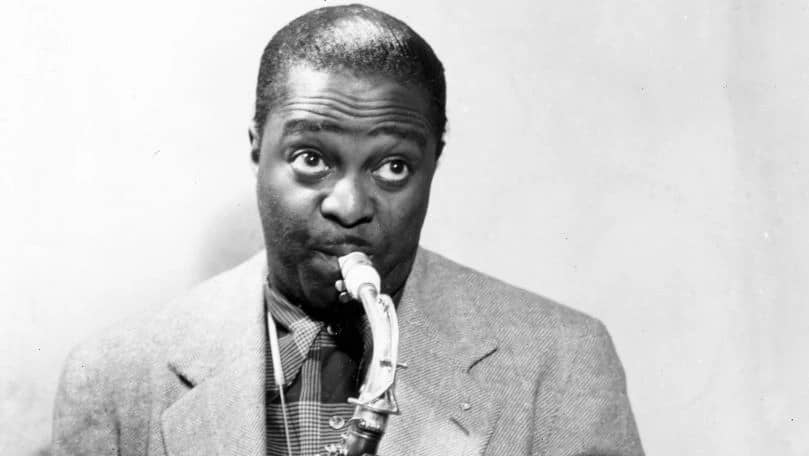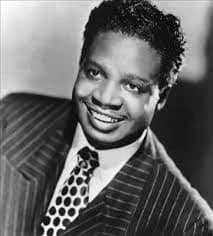The History of Jump Blues: High Energy Groove and Expressive Feel
Jump blues music was once a popular genre in the United States during the 1940s and 1950s. Known for its infectious rhythm and energetic style, jump blues music combined elements of jazz, blues, and swing. It often featured a swinging horn section, vibrant piano melodies, and driving bass lines that got people up on their feet and dancing. Many influential artists, such as Louis Jordan and Big Joe Turner, played a significant role in shaping the jump blues sound. Today, jump blues music continues to be celebrated for its infectious groove and timeless appeal. By combining musical elements from multiple sources, it created an exciting sound that would lay the groundwork for rhythm and blues and classic rock.
To understand how this important fusion genre developed, we need to take a little musical time travel back to the 1930s and trace its origins in the jazz and blues of that era.
Origins in Earlier Jazz and Blues
In the 1930s and early 40s, big band swing jazz dominated American popular music, led by stars like Duke Ellington and Count Basie fronting huge 15-piece orchestras. Down south, country blues musicians like Robert Johnson and Memphis Minnie were strumming acoustic guitars and singing the blues.
This new genre emerged when some swing band musicians started incorporating blues elements into their jazz performances. As the big bands slimmed down into smaller combos, the music could get louder and looser. This melting pot of influences resulted in the birth of this fresh sound.
Jazz big bands like Count Basie‘s trimmed down to smaller 5-7 piece groups, allowing a more improvised and loose sound. In these pared down bands, the saxophone could now take the melodic lead over bluesy guitar riffs, a perfect fusion. Bluesy boogie-woogie piano playing added propulsive rhythms to the mix. Songs followed the 12-bar blues format but with extended jazz solos and arrangements. This combination of musical relatives created the swinging rhythm that defined this new genre.
Distinctive Musical Features
This music has several defining characteristics that give it a lively distinctiveness:
- Fast 4/4 tempo – The beat is much quicker than traditional blues, with emphasis on beats 2 and 4.
- Saxophone riffs – Rhythmic sax lines, often played on tenor sax, are central to the driving feel.
- Small bands – It was played by tight, 5-7 piece groups rather than big bands, allowing a loose sound.
- Humorous, slang lyrics – Songs featured energetic, often humorous lyrics using urban wordplay and slang.
- Boogie piano – Prominent boogie-woogie style piano maintained the fast rhythms.
- Call-and-response vocals – Vocalists interacted playfully with the band, responding to the instrumental lines.
- Improvised solos – There was room for improvised solos, especially on saxophone.
This mix of swing, blues, and boogie created an exciting new sound that soon had audiences jumping.
Migration Spreads the Sound
This music originated in the African American scene of the South in the early 40s. But it quickly spread north as blacks migrated to Northern cities, where it took off in nightclubs and on the radio.
As part of the Great Migration, black communities expanded rapidly in Northern cities like Chicago, New York, Detroit, and Los Angeles. It became the hot new soundtrack at urban nightclubs and bars. Independent radio stations aimed at black listeners helped popularize and spread it nationwide. The music also gained mainstream popularity with white audiences.
Groups toured the “Chitlin Circuit” of black clubs and theaters across the country. Stars like Louis Jordan wowed integrated audiences with their high-energy performances. The Great Migration was critical in spreading this vibrant new genre far beyond its regional roots.
Pioneering Musicians
A number of talented singers, bandleaders, and sax players drove the development of this genre:

Louis Jordan was the leader of the Tympany Five band and earned the nickname “King of the Jukebox” for his many hit songs. Jordan scored hits with songs like “Caldonia” and “Ain’t Nobody Here but Us Chickens.” His success inspired many other musicians to pursue this new sound.

Roy Brown was an energetic shouter considered the original “Godfather of Rock n’ Roll.” He had a major hit with “Good Rocking Tonight” in 1947, combining blues, jazz, and R&B influences.

Big Jay McNeely was a legendary saxophonist who epitomized the outrageous energy of this genre. His honking sax style and onstage antics were a huge influence on early rock and rollers. Hits included “The Deacon’s Hop” and “Nervous Man Nervous.”

Wynonie Harris was one of the most popular singers of the late 40s, known for his rousing vocals and wild stage performances. Songs like “Good Rockin’ Tonight” helped define the new genre.

Jack McVea was a pioneering saxophonist credited with recording the first-ever song in this style, “Open the Door, Richard,” in 1945. This helped establish it as a distinct new genre.
These artists built the foundation in the 40s. But its influence extended far beyond that decade, as we’ll see next.
Impact on R&B and Rock n’ Roll
This music was crucial in paving the way for the rise of rhythm and blues in the late 1940s. And it also provided the blueprint for rock n’ roll that emerged in the 1950s.
It led to the development of smaller electric blues bands that formed the core R&B sound. The saxophone-driven instrumentation carried over heavily to early R&B hits. And the rollicking piano style pioneered in it became a signature of classic rock n’ roll.
Artists like Louis Jordan and Roy Brown were some of the first to use electric guitars in their small combos, an innovation quickly adopted by rock guitarists. The 12-bar blues chord changes and melodies at its heart were incorporated into many early rock songs.
Without it paving the way, rock likely would have sounded very different. It demonstrated how blending musical styles together could birth exciting new genres, an approach rockers fully embraced. The genre laid crucial groundwork for rock’s development.
While it never found the mainstream popularity of rock or R&B, this music served as the vital connecting tissue linking these genres. Its swinging rhythms, blues foundation, and daring musical fusion made it the bridge that led to so much of the popular music we enjoy today.
Jump Blues Revival
Jump blues saw periodic revivals as younger generations rediscovered the classic sound. In the 1970s, blues artists like Louis Jordan and Roy Brown had a comeback touring blues and jazz festivals as their music was reappreciated. The jump blues style influenced rockabilly and psychobilly bands starting in the 1980s. These bands mixed jump blues with punk rock energy.
Brian Setzer found success covering old jump blues songs with his rockabilly band The Stray Cats. The jump blues revival was in full swing in the 1990s during the swing music revival of that decade. Bands like Big Bad Voodoo Daddy and The Cherry Poppin’ Daddies blended vintage jump blues with modern ska and punk sounds. Today, the retro jump blues sound continues to influence blues, jazz, and indie rock artists, keeping the genre alive.
The Legacy of Jump Blues
Jump blues left behind an enduring legacy and influence on popular music. It helped break down racial barriers between white and black musicians and audiences in the 1940s. The jump blues sound led directly to the rise of R&B and the emergence of rock n’ roll. Jump blues pioneered the use of electric guitars and boogie piano styles adopted by later genres.
Jump blues demonstrated how blending musical styles together could create exciting new sounds, an approach rockers fully embraced. The energy and showmanship of jump blues performers inspired future rock n’ roll stage acts. Jump blues served as an upbeat soundtrack during World War II, boosting morale. The genre helped spur the integration of radio stations and concert venues in the 1940s. Jump blues still influences modern jazz, blues, and rock musicians today.
While it never found the mainstream popularity of rock or R&B, jump blues’ influence on American popular music is undeniable. This vibrant fusion genre left an indelible mark on the music that followed.
FAQ’s
Q: What is jump blues music?
A: Jump blues music is an up-tempo style of blues that emerged in the late 1930s. It is characterized by its energetic rhythm and prominent bass line, often played by a pianist. Jump blues is sometimes called boogie woogie, and it has been cited as a precursor to rhythm and blues and rock and roll.
Q: Who were some of the famous jump blues artists?
A: Some of the famous jump blues artists include Big Joe Turner, Fats Domino, Lionel Hampton, Lucky Millinder, Albert Ammons, Meade Lux Lewis, and Pete Johnson.
Q: What is the influence of jump blues in rock and roll?
A: Jump blues had a significant influence on the development of rock and roll. Its energetic and rhythmic style laid the foundation for the genre, and many early rock and roll artists drew inspiration from the jump blues sound.
Q: When did jump blues become popular?
A: Jump blues became popular in the late 1930s and remained a prominent genre of black popular music throughout the 1940s and 1950s.
Q: What are some typical characteristics of jump blues?
A: Some typical characteristics of jump blues include its up-tempo rhythm, prominent bass line, energetic vocals, and the use of boogie woogie piano. It often features a horn section and draws elements from big band music.
Q: How did jump blues influence other genres of music?
A: Jump blues had a significant influence on the development of rhythm and blues and rock and roll. The energetic and rhythmic style of jump blues set the stage for these genres, and many artists and songs in the early days of rock and R&B were influenced by jump blues.
Q: What are some famous jump blues songs?
A: Some famous jump blues songs include “Pine Top’s Boogie Woogie” by Pine Top Smith, “Shake, Rattle and Roll” by Big Joe Turner, and “Tutti Frutti” by Little Richard.
Q: What is the history of jump blues?
A: The history of jump blues dates back to the late 1920s and early 1930s. It originated from the boogie woogie piano style and gained popularity in the black communities. In 1938, the Carnegie Hall concert featuring Albert Ammons, Meade Lux Lewis, and Pete Johnson marked a significant moment in the recognition of jump blues as a distinct musical genre.
Q: What is the significance of the left hand bass in jump blues?
A: The left hand bass played by the pianist is a defining characteristic of jump blues. It provides a driving rhythm and creates a solid foundation for the music.
Q: How was jump blues different from other genres of blues music?
A: Jump blues differed from other genres of blues music in its up-tempo style and its incorporation of elements from big band music. It had a more energetic and lively feel compared to traditional blues.


